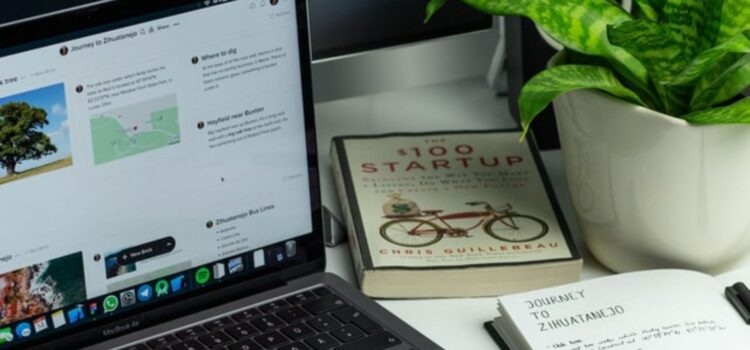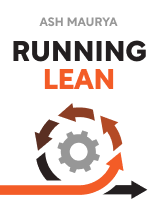

This article is an excerpt from the Shortform book guide to "Running Lean" by Ash Maurya. Shortform has the world's best summaries and analyses of books you should be reading.
Like this article? Sign up for a free trial here.
What is Ash Maurya’s Lean Canvas? How can you use Lean Canvas to improve your business?
Ash Maurya’s Lean Canvas is a business modeling tool used to develop flexible, adaptive businesses that respond to customer needs as they grow. By learning how to use Lean Canvas, you can support your business’s growth.
Read on to learn more about how to use Ash Maurya’s Lean Canvas and see Lean Canvas explained in detail.
About Ash Maurya’s Lean Canvas
Why do so many business models fail? According to entrepreneur, Lean Canvas creator, and best-selling author Ash Maurya, it’s because entrepreneurs assume they already know what customers want and finalize their plans before testing their ideas. As a result, they create rigid plans that they can’t easily adapt to customers’ actual preferences.
In Running Lean, Lean Canvas is explained as a way that you can avoid this pitfall by adopting continuous validation and iteration. This approach helps build and sustain a flexible business model that evolves alongside customer preferences.
(Shortform note: Why is it important to create a flexible business model? According to business experts, the average lifespan of successful business models—that is, the period during which they effectively cater to market needs—has fallen to less than five years. Therefore, to achieve a sustainable competitive advantage and meet evolving customer expectations, businesses must continually evaluate and redesign their business models.)
The first step toward drafting a successful business model is to articulate your hypothesis regarding the factors that will drive its success. During this step, Ash Maurya’s Lean Canvas uses concepts like hypotheses and assumptions to emphasize that your ideas are educated guesses that require validation through research, experimentation, and real-world feedback. He recommends using a Lean Canvas template—a condensed, one-page framework that encompasses nine essential elements of a business model, which we’ll explore later in this section—to structure and visualize your hypotheses.
(Shortform note: Maurya adapted this framework from the Business Model Canvas by Alexander Osterwalder and Yves Pigneur, authors of Business Model Generation. The Business Model Canvas offers a comprehensive framework tailored for established businesses seeking to assess existing strategies, analyze competitors, or design new ventures. In contrast, Ash Maurya’s Lean Canvas is crafted for startups, concentrating on pivotal business aspects like problem-solution fit and competitive edge. This focus makes it a versatile tool for rapidly testing and refining new business ideas.)
Why use Ash Maurya’s Lean Canvas in place of a traditional business plan? According to Maurya, traditional business plans are lengthy. As such, they require time-consuming revisions that can hinder your ability to capture and act on market insights—resulting in the business model becoming quickly outdated. In contrast, learning how to use Lean Canvas empowers you to use a more agile alternative that not only saves time but also encourages an iterative process. By condensing your ideas into a single page, you can swiftly communicate, validate, and update your business model to incorporate new insights and quickly respond to market feedback.
(Shortform note: There are many alternatives to this template—each template emphasizes different areas and priorities for developing specific business models. For instance, the Blitzscaling Canvas prioritizes speed over efficiency, making it ideal for startups aiming for rapid growth in highly competitive markets. Alternatively, the RTVN (Resources, Threats, Values, and Needs) model helps assess available resources, identify potential threats, and align values and customer needs, making it suitable for businesses operating in uncertain or volatile environments.)
Using Ash Maurya’s Lean Canvas: How to Begin Drafting Your Model
Maurya suggests three key pieces of advice for drafting your Lean Canvas, explained in detail below:
1) Start by filling out the elements that you understand best. Initially focusing on what you know well provides a strong cornerstone upon which to shape your ideas. (Shortform note: Research suggests that starting with what you know works as a catalyst for innovation. By initially addressing familiar elements, you’re more likely to make progress, enhance your confidence, and generate positive momentum that pushes you to explore the more complex or unknown elements of your business model.)
2) Keep your hypotheses brief and straightforward. Concise statements serve as guiding principles that help maintain focus as you iterate and refine your business model. (Shortform note: Concise hypotheses require a delicate balance between conveying essential information and maintaining brevity. If you struggle with this balance, apply the “So what?” test: For every piece of information you’re tempted to add, ask yourself: “Does this significantly enhance understanding of the statement?” If the answer isn’t a resounding “yes,” omit it. Additionally, consider creating a secondary document to capture additional points you want to remember.)
3) Create a separate Lean Canvas for every customer group you identify, as each will likely have unique requirements that influence various elements of your business model. This approach encourages you to explore multiple possibilities rather than fixating on a single implementation of your idea—which, in turn, increases your chances of developing a profitable business model.
(Shortform note: Osterwalder and Pigneur (Business Model Generation) echo this approach, emphasizing that each business model element is an interdependent component—meaning that changes to one element often require adjustments in the others. For example, catering to both budget-conscious and premium-seeking customers requires two distinct pricing structures. According to them, customer groups are distinct enough to require separate business models if you need to create different products and services to meet their needs, reach them through different distribution channels, develop different types of relationships with them, or adapt your pricing structures to accommodate their needs.)
When to Update Your Lean Canvas
Once you’ve completed your interviews and gained a comprehensive understanding of your target customer group’s problems, update all relevant elements on your Lean Canvas. Note that, due to their interdependent nature, changes to one element will inevitably influence the others. For example, changing the problem you’ll address will likely impact your solution, your offer, your competitive edge, and your expenses. Therefore, remember to update all elements of your Lean Canvas throughout the four testing stages.
(Shortform note: Business experts suggest that effective communication and documentation are crucial during this stage, especially when working in teams. To foster a shared understanding and alignment among team members, ensure that your team is well-informed about the canvas’s evolution and the reasons behind specific modifications. Additionally, maintain a record of the changes made and the rationale behind them. This documentation not only serves as a historical reference but also helps in tracking the progression of your business model, allowing you to make informed decisions as you refine your strategy.)
Before moving on to the next test stage, Maurya suggests that you determine whether the identified problems can be solved—consider the feasibility of potential solutions to ensure that pursuing them is viable for your business.
(Shortform note: Even if your solution does feasibly solve the problem at hand, stay aware of many other ways that it may fail or lack feasibility. To pinpoint these potential failure points, disaster avoidance experts suggest imagining that your solution has already failed and that you’re thinking about it retrospectively. Write out all of the plausible reasons for this failure. For example, the product was defective, or the marketing campaign failed to attract attention. Then, brainstorm ways to avoid these failure points and integrate your ideas into your solution.)

———End of Preview———
Like what you just read? Read the rest of the world's best book summary and analysis of Ash Maurya's "Running Lean" at Shortform.
Here's what you'll find in our full Running Lean summary:
- The reason why so many business models fail
- Why you should never assume you know what your customers want
- Why your business should be built on continuous validation and iteration






